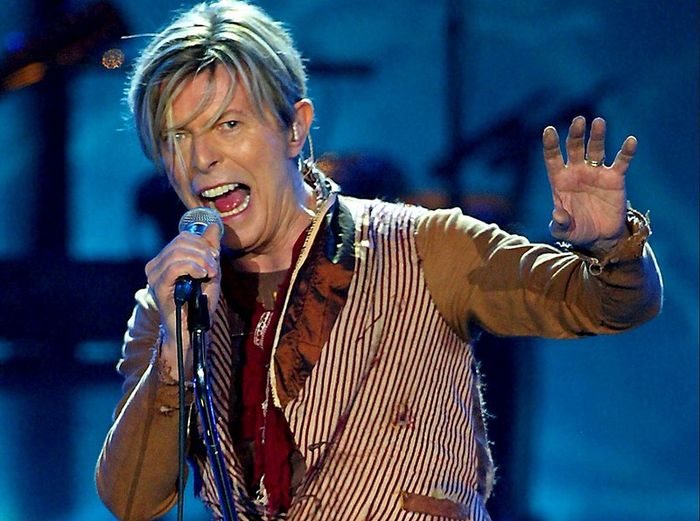When John Lennon stepped into Lady Mitchell Hall
In 1969, Lennon and Yoko Ono delivered a highly unusual concert in a venue better known for droning lecturers than droning guitars

The year 1969 was predisposed to notoriety. Yet, it was before man made his first (and grammatically incorrect) step on the moon that John Lennon stepped foot into Lady Mitchell Hall. Complimenting the (less than musical) yelps of his new partner and collaborator, Yoko Ono, Lennon delivered nearly half an hour of improvised feedback generated using an amplifier and electric guitar to an audience that had no idea what he was going to perform. As The Beatles – and the 60s – imploded around him, John Lennon was certainly making an interesting career move …
“That was the big difficulty – how do you follow the Beatles?”
The Beatles played Cambridge before in 1963 as part of their near-endless tour of British theatres and art venues. Back then, Lennon and McCartney were on the cusp of their fame as songwriters and only just replacing rock and roll standards like ‘Twist and Shout’ with their own compositions like ‘All My Loving’ and ‘I Saw Her Standing There’. There would be a rapid development from these short and sharp songs to the experimentation of Sgt. Pepper’s Lonely Hearts Club Band and the White Album.
The concert at Lady Mitchell Hall was Lennon’s first public performance without the other members of the band. For most of the 60s, Lennon’s role was as the outspoken frontman of the world’s most successful band. As McCartney noted in a 1999 interview with Michael Parkinson: “That was the big difficulty – how do you follow The Beatles?” So, how did Lennon approach the concert?
As The Beatles began to split, Lennon became increasingly interested in the more experimental side of art, music and life in general, accompanied by Yoko Ono. This included an agreement to join Ono’s scheduled performance at Cambridge. Ono had been vacillating about the concert and it was Lennon who persuaded her to commit.
“Rolling Stone called the recording ‘utter bullshit’”
Until then, Lady Mitchell Hall had more often hosted droning lecturers than droning guitars. Apparently, this atmosphere encouraged Lennon to “show off and be more avant-garde than anyone in avant-garde music”, a position that annoyed the event’s organiser, Cambridge student and writer Anthony Barnett, who was only expecting Ono. For the full 26 minutes, which can be heard (though unfortunately not seen) on the recording ‘Cambridge 1969’, Lennon had his back turned towards the audience. The saxophonist, John Tchicai, recalled how Lennon set an alarm clock to determine the end of the show before walking on stage. Perhaps Lennon should have kept that alarm for his infamous “bed-ins”, where he and Ono attempted to engender world peace by remaining in bed for several days at a time later that year.
Other alarm bells should have been ringing. The concert was not altogether regarded as a success. As Lennon later said: “I just hung around and played feedback, and people got very upset because they recognised me: ‘What’s he doing here?’ It’s always: Stay in your bag.”
The critics’ reviews were, frankly, bad. Lennon’s performance was different and, to many reviewers, too different from The Beatles. Rolling Stone called the recording “utter bullshit”, while The Boston Sunday Globe described the performance as “a well recorded vocal by a mosquito”.
However, the concert did find a responsive audience in the Cambridge students who were encouraged to bring their own instruments for some “improvisation”. Retrospective reviews have often claimed that the concert was liberational for Lennon’s later career. For instance, Niel Spencer argued in 2016 that “you can sense the relish he took in it.”
1969 was the last glorious year of The Beatles. Subsequently, George Harrison decided to pursue Buddhism and spirituality, while McCartney went back on the road performing at UK universities as part of his new outfit, Wings. Only John Lennon pursued the “revolution” mentioned in such unnerving tracks as ‘Revolution 9’.
After all, the 70s were much bleaker for protesters and their dreams of a world without the Vietnam War. Nevertheless, this small revolution in a Cambridge lecture hall inspired Lennon to join a growing wave of youthful radicalism and become an activist and revolutionary in a way he had never been before. Songs like ‘Power To The People’ and ‘Give Peace a Chance’, though more musically conventional, are charged with the energy of experimentation (well, that and dope). Lennon would go on supporting figures like the revolutionary Marxist Angela Davis and striking workers until his death. That step into Lady Mitchell Hall may well have been a small one, but it was one giant leap for the musically inclined.
 Sport / The diary of a Bumps rower24 April 2024
Sport / The diary of a Bumps rower24 April 2024 Features / Will May Balls ever be sustainable?30 April 2024
Features / Will May Balls ever be sustainable?30 April 2024 Comment / Cambridge is right to scrap its state school target1 May 2024
Comment / Cambridge is right to scrap its state school target1 May 2024 Interviews / ‘Stay soupy!’: in conversation with Soupycamb1 May 2024
Interviews / ‘Stay soupy!’: in conversation with Soupycamb1 May 2024 News / Emmanuel College cuts ties with ‘race-realist’ fellow19 April 2024
News / Emmanuel College cuts ties with ‘race-realist’ fellow19 April 2024






